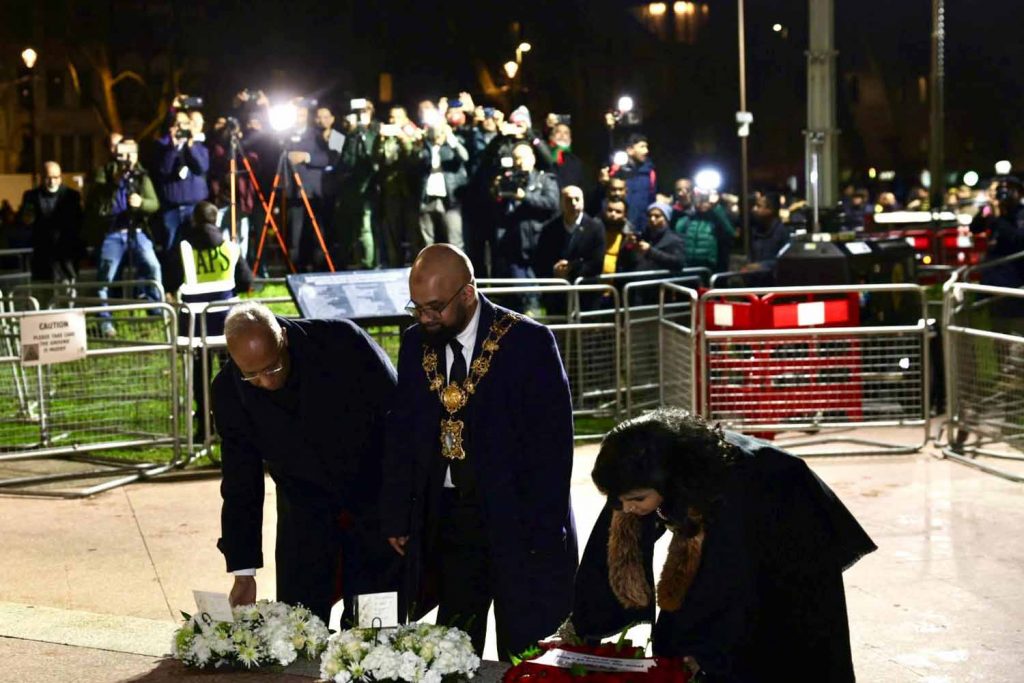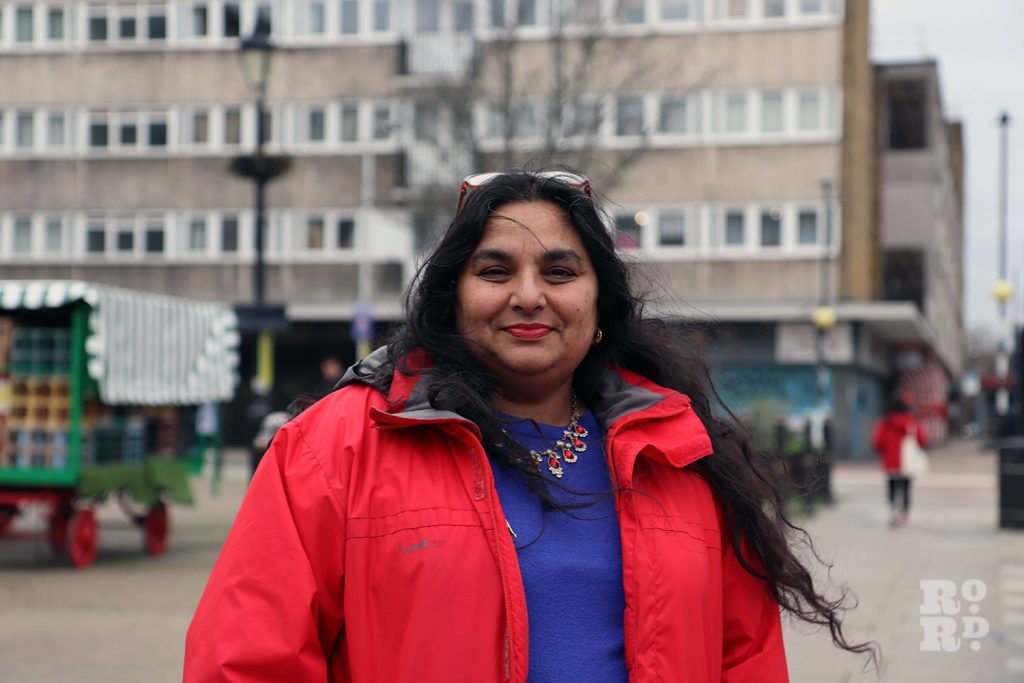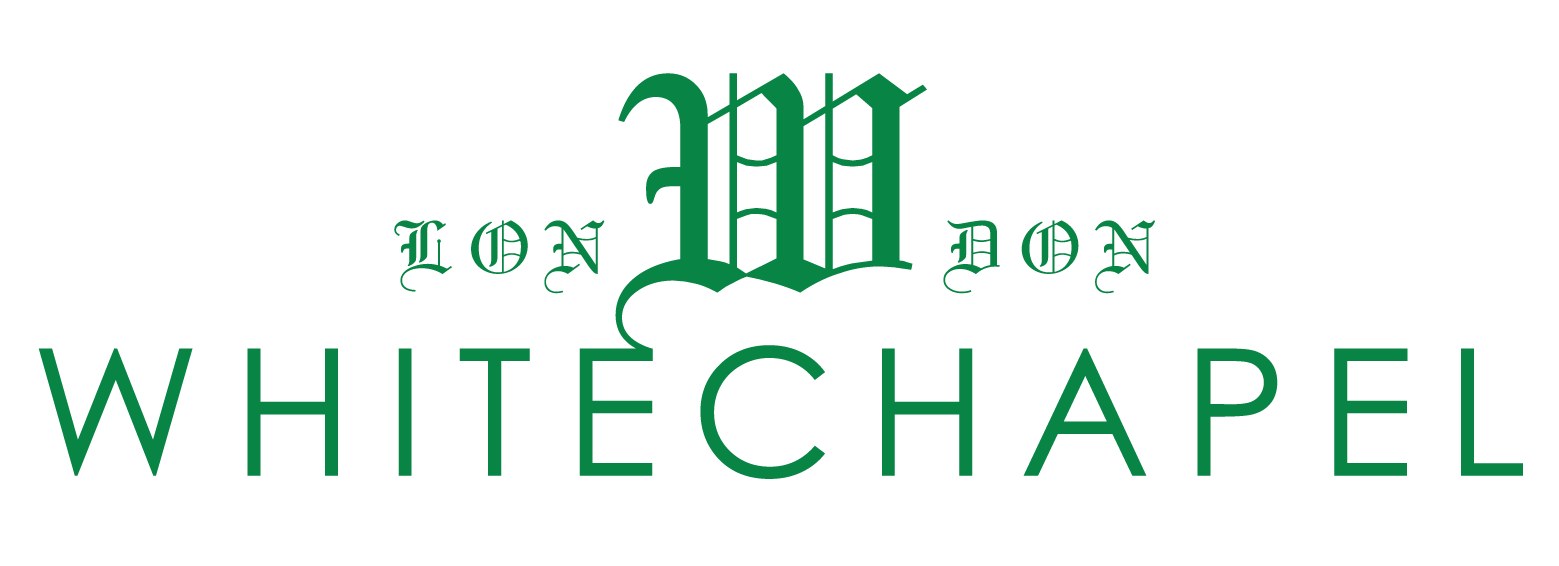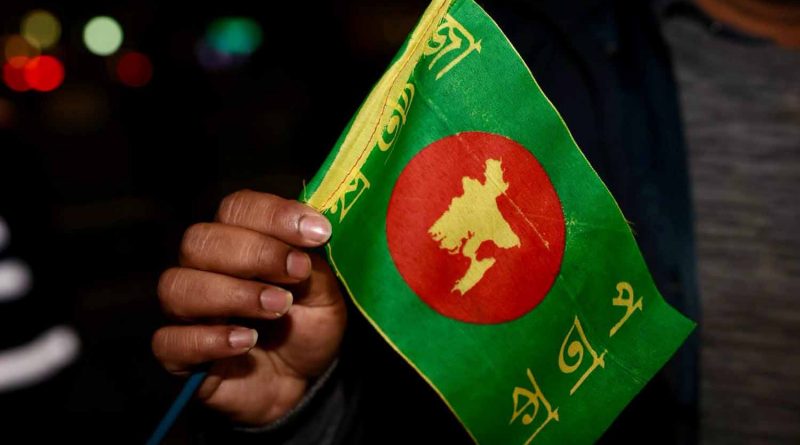With third-generation British Bangladeshis losing their mother tongue, the community faces a tipping point
In the first part of our four-part series about the hidden cost of losing Bangla, we examine why Bengalis hold their mother tongue dear and the intergenerational importance of keeping a language alive.
As the singer Joy Crookes, whose mother is Bangladeshi, poignantly put it in her song London Mine: ‘Bangla noise on Brick Lane, that’s the sound of my home.’
If you walk down Brick Lane or Whitechapel High Street today, you will hear Bengali or Sylheti being spoken – from school children gossiping and couples bickering to market sellers hawking their fresh fish.
For outsiders, this can seem like a charming quirk of the area. But for British Bangladeshis Bengali, also known as Bangla, and Sylheti are intimately connected with their heritage and identity.
The two languages have a deeper importance.
However, the British-Bangladeshi community in the East End is facing a radical change. What happens when a new generation born and raised in London, many of whom have never been to Bangladesh, grows up and cannot speak their mother tongue?
There is anxiety about whether the language will survive and what will be lost if young people can’t communicate with their grandparents.
There is a sense from the people I’ve spoken to that the next few years mark a tipping point.
Many parents find it daunting to think that ‘in history, it’ll be noted that it was at this point where the language declined,’ a fear voiced by Nurull Islam, co-founder of the Mile End Community Project.
This four-part series of articles will explore this issue from several different angles, explaining why language is so important to the British-Bangladeshi community, how people are trying to sustain it and what the future holds.
There aren’t currently any statistics on the decline of young British Bangladeshis speaking their mother tongue, but Nurull Islam can see the change going on around him.
Islam noticed that his children were struggling to communicate with their grandmother. His children grew up in London and their first language is English. Their grandmother’s first language is Bengali.
They can communicate, but it’s difficult.
Islam was struck by this. He worried that the things that grandparents usually pass on to their grandchildren – from folk tales to stories about their journey to the UK – would be lost.
Determined to combat this problem creatively, he started the Stories from Home project in partnership with Queen Mary, University of London.
The idea was to bring three generations together through language. The grandparents would share a story, the parents would translate it and the grandchildren would draw it.
The stories were filmed so that they could be shared widely and start a conversation about the loss of language.
The films are touching and the response from those who took part across three generations was positive.
Islam explains that: ‘When [the children] hear the stories of what their grandparents went through, especially when they migrated and they built a new life for themselves, they get an amazing sense of what [their grandparents] have been through and what they’ve left behind.’
The importance of preserving the language for the older generation hit home for Islam when he met an older gentleman after prayers. Islam pulled up a chair for him when they were putting on their shoes and they got chatting.
When Islam told him about the project, the man started to cry. He told Islam with tears running down his face: ‘This language is so important to us and I hope that this younger generation appreciates that.’
The tears of the older generation hold the memories of Bangladesh’s fight for independence from Pakistan and the endeavour to protect the identity and culture of its people.
Bangladesh is a country that ‘quite literally fought for its language,’ explains Dr Fatima Rajina, an academic at De Montfort University.
Rajina remembers being told by her parents and grandparents that people died so that she could speak Bengali, so she had better not complain when they demanded she speak it at home.
The history of Bangladesh’s independence from Pakistan is complex, but language played a big part in it.
After the Partition of India in 1947, the new country of Pakistan was created. It had two parts over a thousand miles apart: West Pakistan, now Pakistan, and East Pakistan, now Bangladesh.
The government was based in West Pakistan.
In 1948 the government imposed a law which made Urdu the state language. This caused a backlash in East Pakistan, where Bengali was the most commonly spoken language.
Rajina remembers being told by her parents and grandparents that people died so that she could speak Bengali, so she had better not complain when they demanded she speak it at home.
Dr Fatima Rajina
The unrest culminated in several student protestors being shot dead by police in Dhaka on 21 February 1952. The students killed are now known as the Language Martyrs.
This event led to the rise of the Language Movement, a political movement which fought for recognition of the Bengali language.
In 1956, after years of protest, the Government backed down and granted Bengali official status.
Independence for Bangladesh came later in 1971, but this violent repression of people’s written and spoken words sowed the seeds.
A smaller copy of the memorial to the Language Martyrs in Dhaka can be found in Whitechapel’s Altab Ali Park.
And 21 February, the day on which they were killed, now marks Mother Tongue Day. It’s a day recognised by the UN as an annual celebration of linguistic and cultural diversity – but it holds particular importance to Bangladeshis.
It’s celebrated here in Tower Hamlets. People lay wreaths in Altab Ali Park and, traditionally, wear black and white.

Rajina says that the role of the Language Movement in the story of Bangladesh’s independence is sometimes overemphasized. There were many other factors at play.
But for Bangladeshis, this story has made their mother tongue a central part of their identity.
It is important to note that an estimated 90-95% of British Bangladeshis are Sylheti, meaning that they come from the Sylhet region of Bangladesh.
Most Sylhetis speak Sylheti, not Bengali. The two languages have different vocabulary and grammar. The difference in sound between the two is a bit like London English compared to Glaswegian English.
Some Sylhetis speak both languages, some don’t. It’s difficult to generalise about this in London.
But Sylhetis still feel connected to the Language Movement. After all, the imposition of Urdu also impacted regional languages.
The connection between language and Bangladesh’s national story gives these two languages a deeper meaning. Some interviewees compare it to the importance of Catalan to Catalonians.
It is deeply entwined with Bangladeshi heritage and identity, especially for the older generation that still has memories of the independence struggle.
These memories were still fresh for the Bangladeshis who arrived in Britain in the 1960s and 1970s when many made the journey to the UK.
There wasn’t a question of whether this generation’s children would learn Bengali or Sylheti. It was the language spoken at home because it was their parents’ first language.
Julie Begum, co-chair of the Bangladeshi community group the Swadhinata Trust, explains that it was important to this first generation that their children were confidently bilingual.

After all, Bangladesh had just fought a bloody war for its independence in which language played a part.
As the next article of this series will explore, many parents sent their children to supplementary schools to learn their mother tongue.
It’s harder now for a new generation of British-Bangladeshi parents to teach their children Bengali or Sylheti. Dr Fatima Rajina explains that for most parents: ‘English is the language that is quicker on their tongue to explain things.’
‘My cousins are desperately trying to pass Sylheti to their kids. But they’re recognising that…it’s a lot easier to do it in English because it’s less hassle and less thinking on their part,’ she says.
And it’s easier for the children, who are exposed to English in school, on TV and on social media.
Some parents aren’t making their children learn the language like they did. Imam Ajmal Masroor says that he won’t force his children to learn the language unless they want to. It’s for them to decide if they want to make that connection.
With parents struggling to teach the language to the younger generation in the way their parents taught them, Bengali and Sylheti are increasingly under threat in Tower Hamlets.
Language remains an important part of Bangladeshi identity. As Dr Fatima Rajina says: ‘Bengaliness [is] so intricately tied to language.’
But a shift is happening and it is causing anxiety across the community.
In the second part of this four-part series, we look at why Bengali supplementary schools in Tower Hamlets are disappearing and how this impacts the next generation of British Bangladeshis.


This is a really interesting read, however I must say I’m a little baffled.
It is said here that sylheti is separate language to Bengali.
This is not officially recognised by Bangladesh.
It is actually quite controversial to say that sylheti is completely separate language to Bengali language.
Sylheti does not have completely separate vocabulary/grammar to Bengali.
In fact it shares around 50-70 lexicon similarity with Bengali.
That’s why sylheti is often to this day still considered a dialect of Bengali.
That’s why most sylhetis still refer to sylheti as Bengali.
There are numerous different dialects of Bengali in Bangladesh like Khulna,Chatgaiya (Chittagong) and Rangpuri
They are also a fair amount different to the standard form of Bengali, more so Chatgaiya.
None of these are considered officially as separate languages to Bengali in Bangladesh.
What makes this more confusing is the author here while states sylheti is not Bengali a separate language, then compares sylheti and Bengali to London English and Glaswegian english.
Both are Forms of the English language.
Yes, it is confusing. It can help to separate the national politics of neo-colonial nation-state building from linguistic sciences.
There are in fact over 50 languages spoken in Bangladesh today, from three different language families. This is what linguistic studies have shown. However, politically, these languages aren’t recognised because Bangladesh is a neo-colonial nation-state following the colonial goal of cultural assimilation, that is, ‘one nation, one religion, one language’ that started in Europe and was spread around the world through European colonialism. Examples of this are English killing off the other languages in what was Great Britain (Note that some today mis-identify Scots are a ‘dialect’ of English, when it is a ‘separate’ language with its own history), standard French killing off many of the other now endangered languages spoken within the borders of the current nation-state, Italy promoting only standard Italian in schools to the detriment of all of Italy’s other languages, etc. Article 9 in Bangladesh’s constitution recognises only Bengali/Bangla, which creates some hypocritical situations where the supposed ‘dialects’ are concerned.
For example, Chittagonian/Satgaia and Rohingia are ‘twin-sister’ languages that are very much related to each other. Yet, for various political reasons, like not granting Rohingia refugees citizenship in Bangladesh, the Bangladesh government declares Chittagonian/Satgaia to be a ‘dialect of Bengali/Bangla’, but not Rohingia. (The Bangladesh government has even made it illegal to teach Bengali/Bangla to Rohingia refugees. Language being used as a political weapon.) Linguistically, Chittagonian/Satgaia and Rohingia are related, but according to Bangladesh political decisions, they are not.
Another example, Chakma is a ‘sister’ language to Sylheti/Siloti and Chittagonian/Satgaia, but the Bangladesh government doesn’t consider Chakma speakers to be ‘racially Bengali/Bangla’ so Chakma isn’t diminished to a ‘dialect of Bengali/Bangla’. Linguistically, Sylheti/Siloti and Chakma are related, but according to Bangladesh political decisions, they are not. (This is in line with the Bangladesh government’s ethnic cleansing of the Chittagong Hill tracts in the 1980s, which inspired Myanmar to only offer citizenship to certain communities, not including the Rohingia speakers, resulting in today’s refugee crisis of stateless Rohingia speakers.)
Politics follows its own logic when interpreting reality to fit neo-colonial goals of assimilation of minorities. Political messaging warps reality to fit a bias. With Independence and Partition in 1947, technically Bengali/Bangla which is based on the Gaur language of Nadia (re-named ‘Bengali’ by the British) is a foreign language in Bangladesh…
For the regional languages spoken today in Bangladesh, they are separate languages from Gaur/Bengali/Bangla because they are separate systems – sound systems, grammar systems, etc. with separate histories. But Bengali/Bangla domination is trying to erase their separateness, and many people repeat the political propaganda that they have been taught. according to Article 9, without understanding the complicated linguistics and history that make them separate languages. While some of Bangladesh’s regional languages are spoken by millions of people, and have survived Persian and British colonial pressures to assimilate, that is, lose their separate cultural identities and languages, Bangladesh neo-colonialism along with global pressures is causing more and more parents to no longer pass on their mother languages to their children, in favour of what capitalist values say would be ‘better’ languages, that is, languages for jobs sanctioned by neo-colonial governments, instead of the languages that allow people to speak to their grandparents and continue cultural transmission, which can have negative social and health repercussions. The ideology of monolingualism hurts everyone. Humans are naturally multilingual. Learning additional languages is good for the brain.
A major difference between the Gangic Gaur/Bengali/Bangla language and the languages from the Meghna and lower Brahmaputra river basins is that Gangic languages aren’t tonal, while all Sylheti/Siloti, Chakma, Chittagonian/Satgaia, and Rohingia are tonal languages, a feature that took hundreds of years to evolve, separately from languages like Bengali/Bangla. A simplified example to demonstrate tonal differences is:
in Bengali/Bangla, [bhat] ‘rice’, [bat] ‘arthiritis’
(in Hindi-Urdu [bhat] ‘rice’, [bat (rog)] ‘arthiritis’)
in Sylheti/Siloti [ba/t] ‘rice’ with high tone (no [h] sound in Sylheti/Siloti like Bengali/Bangla), [ba\t] ‘arthiritis’ with low tone.
And multiply these differences in high, mid, and low tones for hundreds of pairs and triplets of words in Sylheti/Siloti to have thousands of words that are not the same as in Bengali/Bangla. In fact, above Bengali/Bangla is more similar to Hindi-Urdu than it is to Sylheti/Siloti. Lexical tone isn’t an ‘accent’, it’s a feature that takes hundreds of years of evolution.
Related languages will have similar-sounding words from a shared origin, standard/High German ‘Vater’ – English ‘father’. Standard German and English are Germanic languages, but English is not a ‘dialect’ of today’s standard German.
Bengali/Bangla [car] ‘four’ – Hindi-Urdu [car] ‘four’ – Sylheti/Siloti [sair] ‘four’ – Assamese [sari] ‘four’ – …
It’s not politically acceptable to call Bengali/Bangla a ‘dialect’ of Hindi-Urdu, and it shouldn’t be acceptable either to call Sylheti/Siloti and Assamese ‘dialects’ of Bengali/Bangla, but politics don’t describe reality, they manipulate reality.
The Bangladesh government grouping different languages together to create a (false) Bengali/Bangla-speaking majority isn’t uncommon. India does it too to create a (false) Hindi-speaking majority. The Indian government groups together over 60 major languages, some like Bhojpuri with over 50 million speakers and Rajasthani with over 25 million speakers, diminishing them to political ‘dialects’, but they remain linguistically ‘separate’ languages. (The linguistic use the term dialect is not this political use of ‘dialect’.) The British grouped together the different Anglo-Saxon languages, with a couple hundred years of advance on south Asia, so that the last speakers of non-English Anglo-Saxon languages died in the 1990s.
Lastly, language and group/ethnic and national identities may overlap sometimes but they can also be quite separate. It’s important to not confuse those either when they’re different. In the 19th century, a large number of Sylheti speakers migrated to Hojai, Assam and they do not identify as Bengali, because they have been living in a different political situation. In London, many don’t realise that not all Sylheti speakers are Muslim, nor Bangladeshi, nor identify as Bengali, which is fine. Everyone doesn’t need to follow the dominant politics of one country. Minority groups, just like minority political ideologies, do exist. No community is a monolith. All communities also have diversity within them.
Today, there are over 7000 languages spoken around the world, with fewer than 200 countries. All countries are multilingual, even if governments refuse to recognise this reality and promote cultural assimilation of minority groups.